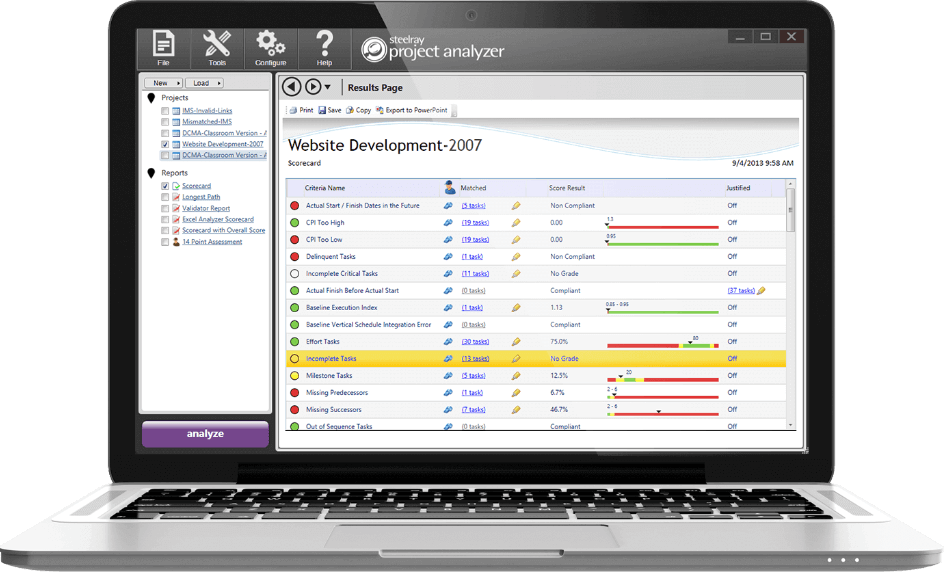High quality schedules lead to a true critical path
Project Analyzer Uncovers Schedule Quality Issues in SecondsSteelray Project Analyzer is software that takes the pain out of creating, maintaining and delivering quality schedules. With Project Analyzer, you can evaluate your project schedule for quality and performance in minutes and produce understandable and actionable results. Schedules can be analyzed against project management best practices, internally defined best practices and government best practices. Project Analyzer supports Microsoft Project .mpp files, Project Server, and Project Online.
Simple Scorecard
Our innovative scorecard shows you the results of each check at a glance, using easy to read green, yellow, and red indicators. Our innovative score strip shows you a great deal of information in a compact space. Each scale is completely customizable.
Report Gallery
Project Analyzer comes pre-configured with all of the reports needed to analyze the quality of your schedule. In addition to our innovative scorecards, Project Analyzer includes schedule validation reports, government standard checks, comparison reports, schedule performance reports, and reports you can customize and build from scratch.
DCMA Metrics
The DCMA DECM Metrics and 14 Point assessment are a series of schedule health checks from the Defense Contract Management Agency that help ensure that your schedule has a trustworthy critical path. Steelray Project Analyzer explains the results in an easy to understand format.
Scheduling Encyclopedia
Steelray Project Analyzer includes The Coach, a built-in encylopedia that dives deeper into your results, explaining the findings in simple terms. For some users, The Coach teaches them the fundamentals of schedule quality. For others, it serves as a quick reference.
Jump to Schedule
When tasks are flagged by Project Analyzer, simply click on a hyperlink to filter those tasks in Microsoft Project. Steelray Project Analyzer provides a smooth workflow to fixing schedule quality issues.
Office Integration
Generating reports in Microsoft Office is a breeze with Project Analyzer. Project Analyzer includes reports that directly create Microsoft Excel, Word, and Powerpoint files. Output from any report can easily be copied into existing or new Office files.





